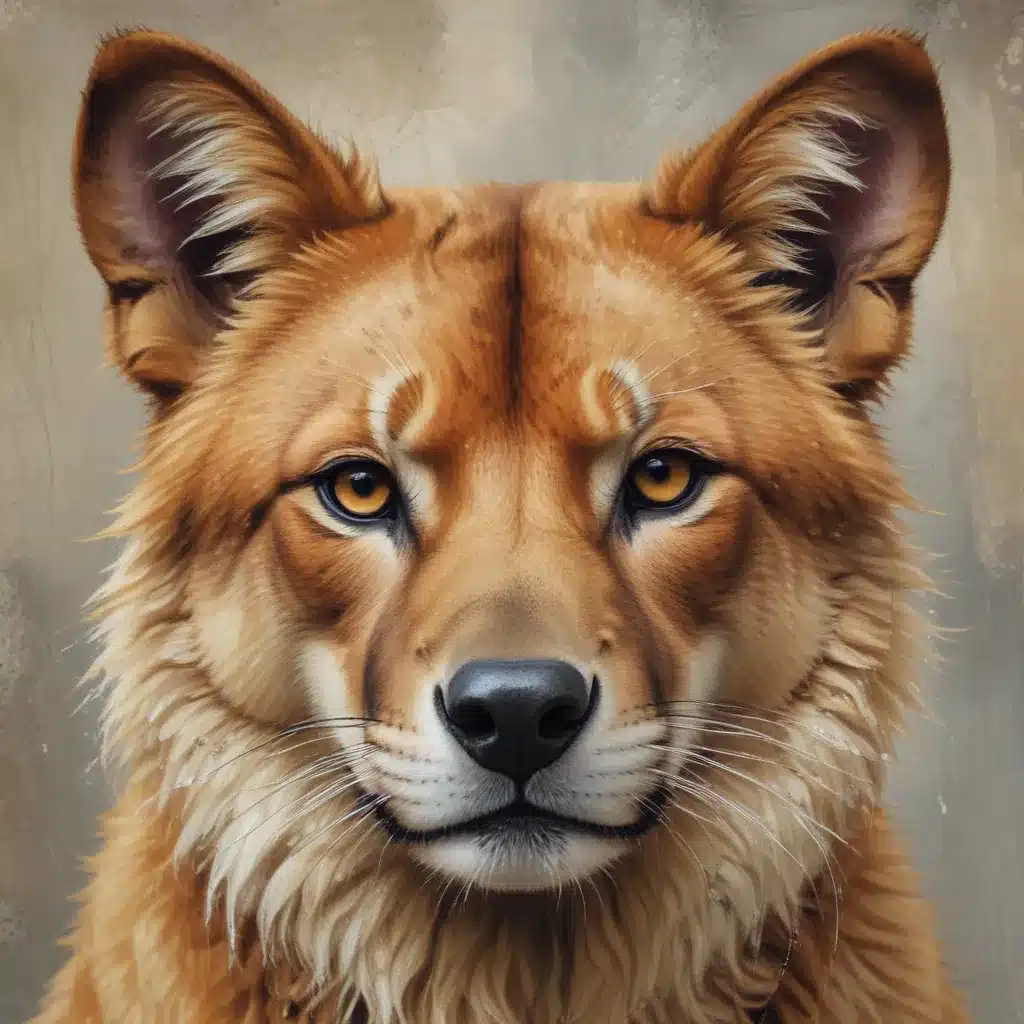
In the dynamic world of contemporary art, the possibilities for evoking emotion and storytelling are boundless. One particularly captivating genre is the realm of emotive animal artwork, where artists harness a diverse array of mixed media techniques to bring their animal subjects to life.
Whether you’re an aspiring painter, a seasoned sketcher, or a mixed media enthusiast, tapping into the expressive power of animal-centric art can be a deeply rewarding creative journey. In this comprehensive guide, we’ll explore a variety of cost-effective mixed media approaches, drawing inspiration from the work of talented artists like Kellie Day, Laly Mille, and others.
Acrylic Painting Techniques for Emotive Animal Art
Acrylic paint is a versatile and accessible medium that lends itself well to the creation of expressive animal artwork. One particularly striking technique is the use of opaque, thick brushstrokes to capture the textural essence of fur or feathers. By applying paint in bold, expressive gestures, artists can convey a sense of movement and energy within their animal subjects.
For a more layered, atmospheric effect, try incorporating acrylic washes to establish depth and a sense of place. Begin by laying down a thin, translucent base coat of paint, then gradually build up layers of color and detail. This approach can be especially effective for depicting animals within their natural habitats, evoking a sense of contemplation and connection.
Another captivating acrylic technique is dry brushing, which involves using a stiff, dry brush to apply paint in short, feathery strokes. This method can be used to create the appearance of individual hairs or scales, adding a sense of texture and realism to your animal subjects. Experiment with a variety of brush sizes and shapes to achieve the desired level of detail.
Expressive Drawing Techniques
While acrylic painting offers a wealth of possibilities, drawing can also be a powerful medium for conveying emotion and personality in animal art. Pencil sketching, in particular, can be a cost-effective and versatile approach.
Pencil Drawing Techniques: Explore a range of pencil drawing techniques, from delicate, detailed renderings to bold, expressive mark-making. Experiment with varying degrees of pressure and shading to capture the nuances of your animal subjects, from the soft, downy texture of a bird’s feathers to the rugged, weathered features of a majestic lion.
For a more gestural, emotive approach, consider incorporating charcoal drawing. The rich, velvety tones and expressive, gestural qualities of charcoal can be particularly well-suited for capturing the essence of your animal subjects, evoking a sense of movement, energy, and raw, unbridled power.
Mixed Media Approaches
By combining various art materials and techniques, you can create truly unique and captivating animal artwork. One intriguing approach is the incorporation of found materials and repurposed objects into your compositions.
Explore the use of collage elements, such as torn paper, fabric scraps, or even natural materials like leaves or twigs, to add depth, texture, and a sense of tactility to your animal portraits. This can be particularly effective for evoking the natural world and the interconnectedness of all living beings.
Another cost-effective mixed media technique is the use of ink and watercolor. The spontaneous, fluid qualities of these mediums can lend themselves well to the depiction of animals, allowing you to capture the essence of movement, emotion, and the natural environment. Experiment with techniques like ink washes, splatter painting, and wet-on-wet watercolor to create striking, expressive animal artworks.
Inspiring Creative Processes
While the technical aspects of mixed media art are essential, it’s equally important to cultivate a rich, emotive creative process. By drawing inspiration from the natural world and tapping into your own experiences and emotions, you can imbue your animal artwork with a deep sense of authenticity and connection.
One effective approach is to incorporate elements of anthropomorphism into your animal depictions. By imbuing your subjects with human-like expressions, gestures, or clothing, you can create a sense of empathy and emotional resonance, inviting the viewer to relate to the animal on a more personal level.
Additionally, consider exploring stylized, abstracted interpretations of your animal subjects. By simplifying forms, exaggerating features, or playing with color and composition, you can craft highly evocative and visually striking animal artworks that convey a powerful emotional narrative.
Practical Tutorials and Techniques
To help you get started on your emotive animal art journey, let’s dive into some practical, cost-effective tutorials and techniques:
Pencil Sketching: Expressive Animal Portraits
Begin by sketching your animal subject using a range of pencil grades, from soft, dark 6B pencils to harder, lighter 2H pencils. Experiment with varying pressure and hatching techniques to capture the unique textures and forms of your subject. Pay close attention to the proportions and anatomy of your animal, using reference images as needed.
Mixed Media Layering: Textural Animal Collages
Gather a selection of affordable materials, such as acrylic paint, collage elements, ink, and colored pencils. Start by layering a background with paint washes and textural details, then gradually build up your animal subject using a combination of drawing, painting, and collage techniques. Embrace the process of discovery and allow your composition to evolve organically.
Ink and Watercolor: Emotive Animal Studies
Begin with a loose, gestural ink sketch of your animal subject, focusing on capturing the essence of movement and expression. Once the ink is dry, apply washes of transparent watercolor, allowing the pigments to mix and blend on the paper. Experiment with techniques like wet-on-wet and salt to create dynamic, atmospheric effects.
Remember, the key to creating captivating emotive animal art is to embrace the journey of exploration and self-expression. By combining cost-effective mixed media techniques with a deep understanding of animal anatomy, you can craft artwork that resonates with emotion, personality, and a profound connection to the natural world.
For more inspiring examples and tutorials, be sure to check out the resources on Pencil and Paint Muse, where you’ll find a wealth of information to help you unlock your creative potential.
Tip: Practice daily sketching to continually refine your technique